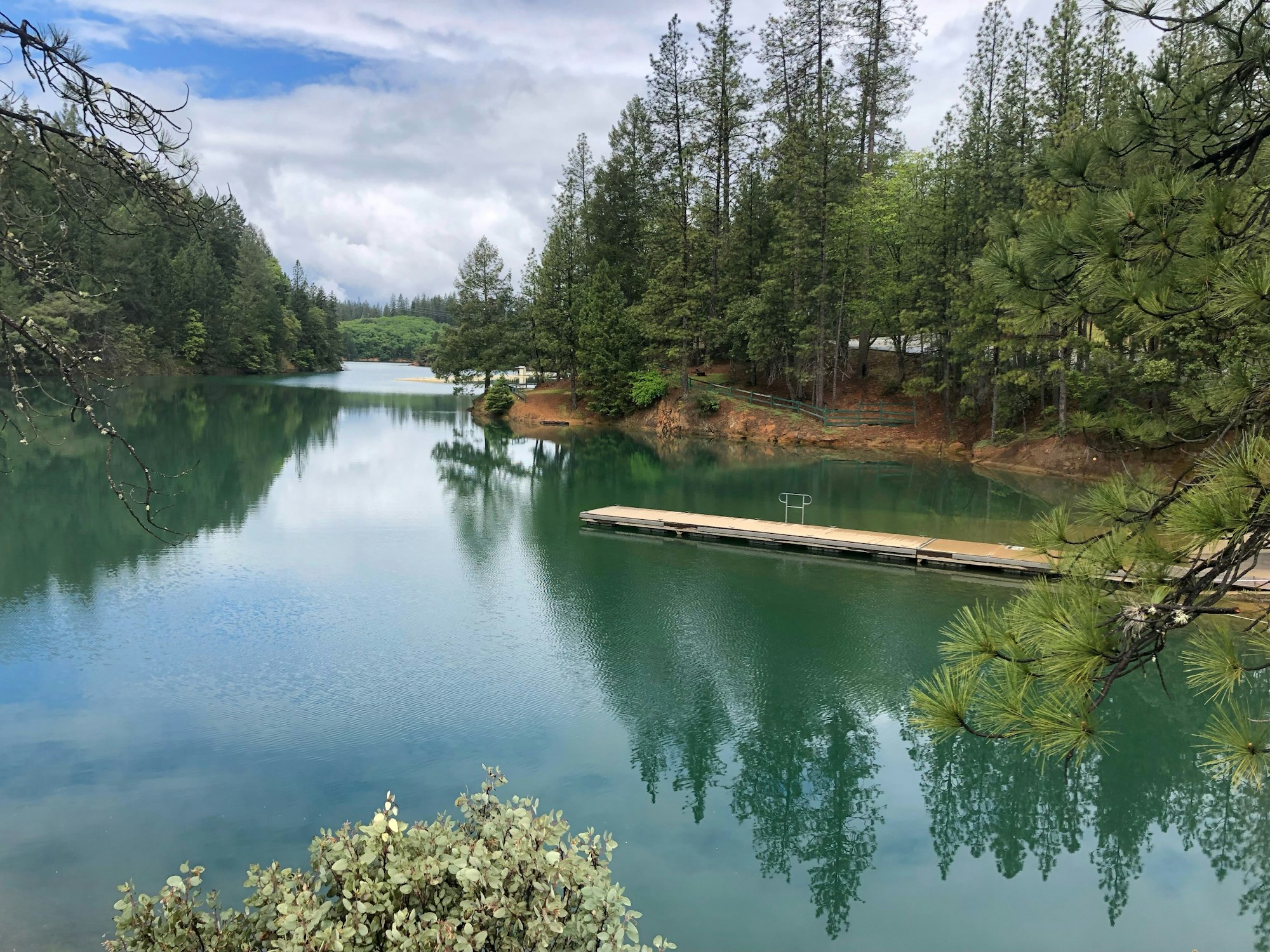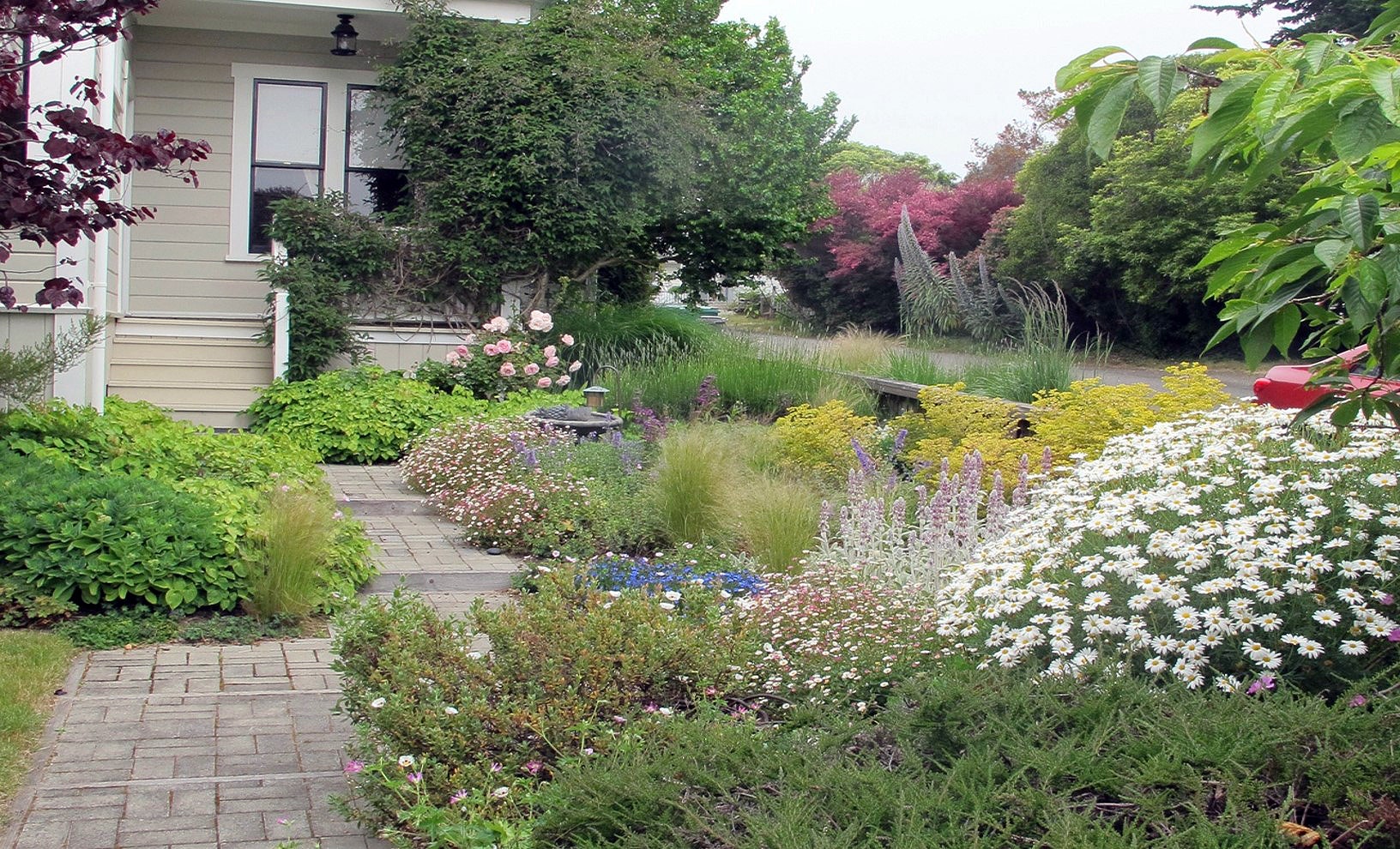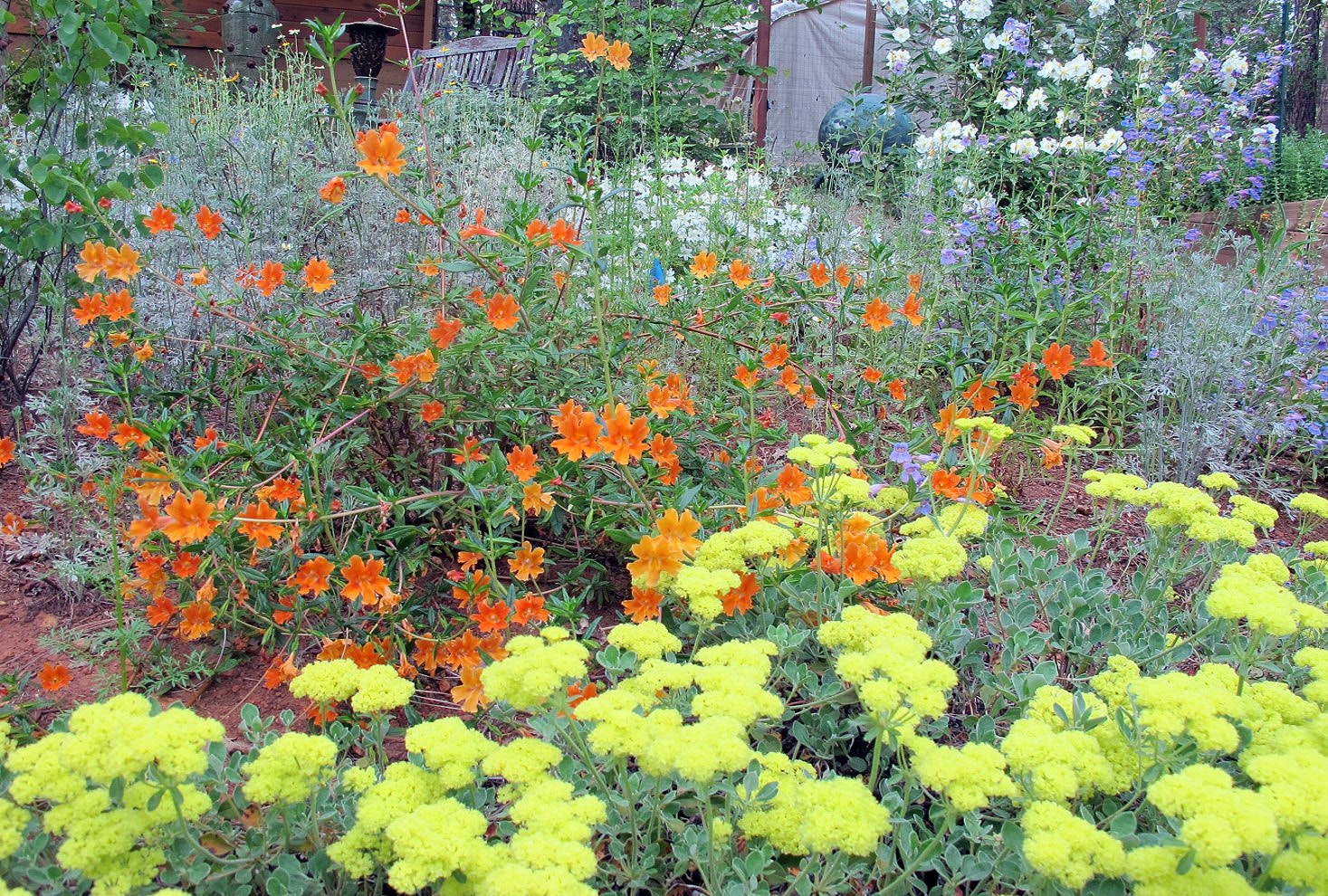When the water can’t flow: conservation is necessary
How to become more water efficient around your property and at home

Making water conservation a lifestyle has become a mantra given increasing drought conditions and shortage of available water. Yet, right now, we in the Sierra foothills are in a unique, dire situation. Becoming more water efficient is more important than ever.
This water year has been “normal,” yet the Nevada Irrigation District (NID) is facing an unprecedented situation where rockslide damage to and failure of infrastructure at Lake Spaulding has effectively cut off water supplies to the district.
So, even though adequate snow has fallen in the higher elevations of the Sierra Nevada, the resulting snowmelt that is our primary water source cannot be transported to NID reservoirs in the foothills.
The lack of access to watershed runoff means the district will need to rely upon the limited water storage in Rollins and Scotts Flat reservoirs. That water will be tapped to ensure customer deliveries. The problem is that until the Lake Spaulding repairs can be made, no flows are available to replenish the reservoirs. As a result, water levels in both Rollins and Scotts Flat will be dramatically drawn down, starting now.
In response, the NID Board of Directors has declared an emergency water shortage and called for 20 percent voluntary water conservation by both raw water and treated water customers. Directors note the more we all conserve, the more water can remain in the foothill reservoirs as supply for irrigation and drinking water later in the year, as well as for recreational use this summer.
NID provides raw water for around 5,200 customers to irrigate 33,000 acres, drinking water to 19,800 connections (more than 56,000 people), and water to Nevada City, Grass Valley, and a small portion of the City of Lincoln.
In the face of this situation, community understanding and response to the call for conservation has been positive. But questions have arisen about how exactly to reduce water use. Many people already have become more efficient with the amount of water they use around their properties. At home, customers are shortening showers and fixing leaks. Many farmers and ranchers have installed water-efficient systems on their properties.
So what can be done beyond that to further conserve water?
Raw water customers

More than 475 miles of canals and 411 miles of pipelines convey raw water to irrigate the local farms and ranches that provide the food on our tables. On the grand scale, many local farmers and ranchers have become more water efficient by shifting to drip- or micro spray irrigation.
In two months, since the request for conservation on March 27, 237 customers have volunteered to reduce their allocation for a savings of 358.5 miner’s inches. That’s a total of 3,250 acre-feet (an acre-foot is the amount of water needed to cover one acre of land to a depth of one foot) for the summer.
**
So how do NID water distribution operators reduce the amount of water delivered from a canal to a customer? It’s all about switching the size of the orifice in a water delivery box. And it’s measured by the miner’s inch. What is this all about? Watch a short video (2:15 minutes) to see how it’s done.
**
Treated water customers - outdoor water use
Did you know that more than half of the water used at home is outside the front door? Becoming more efficient with outdoor water use is a good way to conserve and save money.
A lawn is the thirstiest of landscaping and removing it can instantly save a substantial amount of water. NID offers a turf removal rebate to help you. Click here to learn more.
There are some simple changes to save outdoor water use. Here are some tips:
- Water deeply and less frequently. This will help plants’ roots dig down deep in the soil
- Water your lawn before 6 a.m. and after 10 p.m. to reduce evaporation by 60 percent
- Use mulch around trees and plants to save up to 30 gallons of water a day per 1,000 square feet
- Use a self-closing hose nozzle to save 8-10 gallons per minute
- Recycle indoor water to use outdoors by catching running water from your faucet or tub spout
- Use a bucket of water to wash your car, then rinse quickly with a self-closing nozzle to save up to 80 gallons
- Sweep sidewalks and driveways, instead of hosing them off.
Native plants save water and money

Another way to become more efficient with water use is to focus on native plants, which can survive for long periods without water and are well adapted to the Sierra foothill climate. There are two big perks to these types of gardens and landscaping. One, they save you money. And two, they are usually easy to maintain.
Our community is fortunate to have the UC Master Gardeners of Nevada County, with experts who work with residents to create water wise gardens and smart irrigation systems.
Here’s advice from the Master Gardeners: Choosing native plants and low water plants is the first step in conserving water and supporting pollinators. Once you have found your plants, work plenty of compost into soil by using a turning fork to loosen soil. Two to three inches of compost is a good start. Follow planting directions, and water well after planting. Low-water plants need extra water during the first 2-3 years until roots are well established, and then less after that.
Mulch, mulch, mulch. This is such a critical step. Three to four inches of mulch can reduce water needs by 30-50 percent. When choosing mulch, consider fire safety. Wood chips, cardboard and straw work well except near the house. Rocks or ground cover are better choices.

Now for fun part -- shopping for plants. Some suggestions:
- lavender
- rosemary
- phlomis (Jerusalem sage)
- salvias
- neptha
- yarrow
- lambs ears
- California fuchsia
- penstemon
These are mostly deer resistant. Fortunately, there are many other plants that are not water hogs.
Also consider reducing or eliminating traditional lawn grasses. Many native or low water, low growing grasses will give you lawns that require little maintenance, look lush and reduce water needs. Once you get these established, we all benefit from conservation measures.
The Master Gardeners conduct free public workshops and community events throughout the year. Also, they maintain a 1.5-acre demonstration garden at the NID main office site in Grass Valley. This features several targeted growing areas, including foothill Mediterranean garden, oak habitat and native plant meadow, cottage garden and rock garden. These areas present sustainable gardening practices for home gardeners with an emphasis on plant communities, best suited to the microclimates and soils found in the Sierra Nevada foothills.
Save the Date: The Master Gardener Spring Plant Sale is happening on May 11 in their demonstration garden, located on the NID grounds. Click here for more information about this popular event.
Save the Date: The Annual Spring Garden Tour by the Soroptimist International of the Sierra Foothills will be held May 18-19. This features a variety of gardens, including the Master Gardeners demonstration garden on the NID grounds. This is a fund raiser for money to support programs benefiting women and families. Learn more, click here.
NID Customer Incentives and Rebates:
Water conservation incentives and services help customers become more water-efficient, save water and energy costs, and lower landscape maintenance and utility bills. A water-efficient home and business can reduce waste, potential pollution from irrigation runoff and greenhouse gas emissions from water pumping and heating.
NID is working to help you become more water efficient with several rebates:
- Toilet Rebate Program: NID treated water customer can get financial incentive to replace older toilets with high-efficient, water-saving toilets
- Raw Water Storage Tank Rebate: The districts’ Raw Water Storage Tank Rebate Program was developed to help customers improve their irrigation water system reliability through side storage. The minimum storage tank allowed through the rebate program is 500 gallons.
- Turf Removal Rebate: NID’s Turf Removal Rebate Program provides financial incentive to encourage residential treated water customers to removal turf grass and replace it with water efficient landscape. The rebate amount per residential meter is $1 per square foot of converted turf up to $1,000.
(Published by Yubanet in May 2024)
